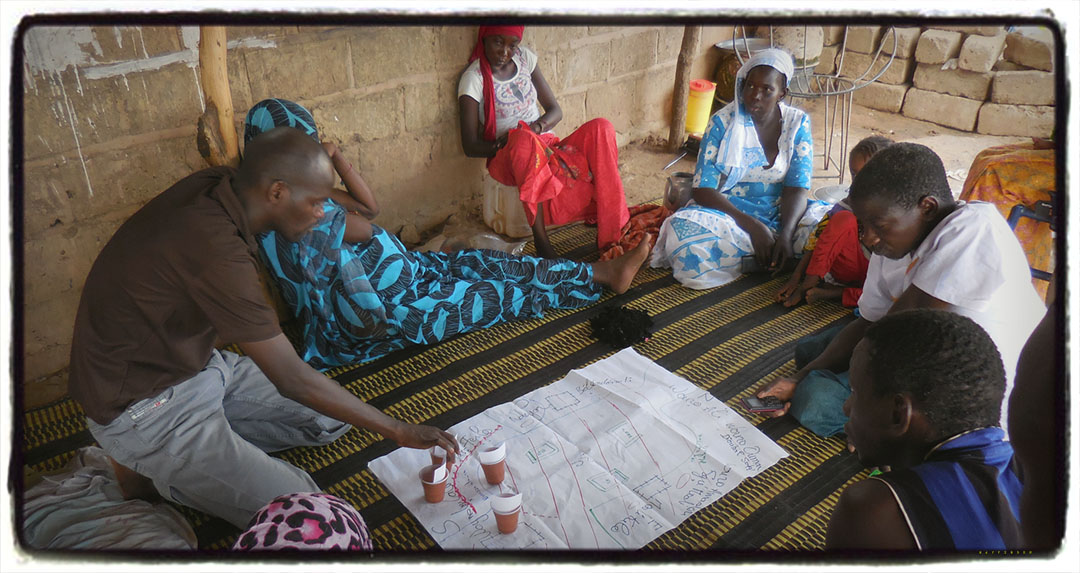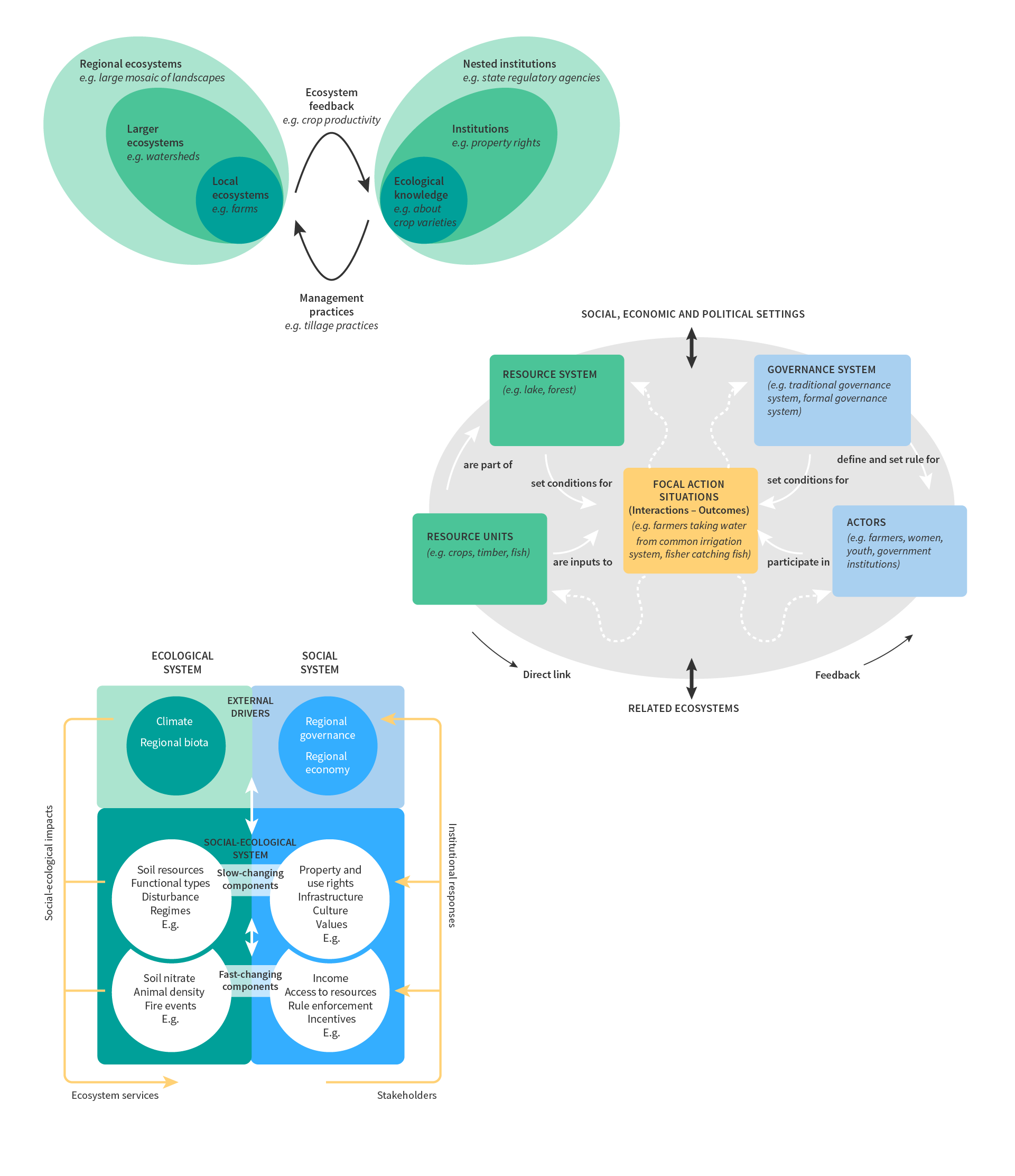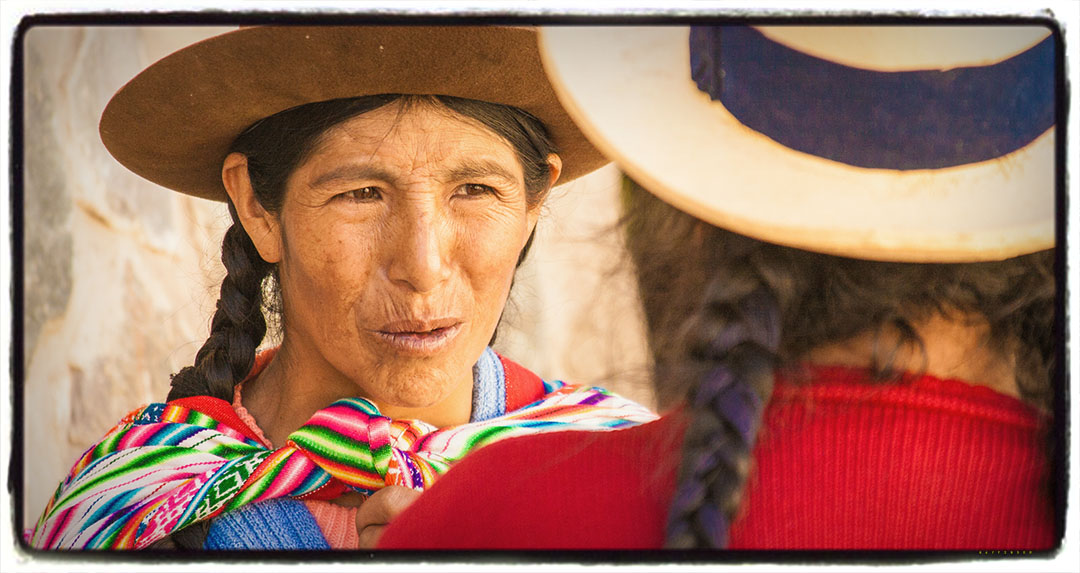Synthesizing your current knowledge
By now you have generated a lot of information on different aspects of the system, relating to people’s aspirations, the dilemmas they face, and in relation to this, the key system components across different domains that need to be considered, important connections and networks, and relevant cross-scale interactions and drivers for change. Before moving further, it is useful to first synthesize this information into a conceptual model of the social-ecological system, building on your early efforts to draw your system in previous work cards. The model should help you describe the current system in terms of its benefits and dilemmas, and also relate to the broad aspirations people have for this system. This conceptual model will provide the basis for Phase 3, where you will do an in-depth investigation of how this system actually works, and why the dilemmas persist.

Stakeholder workshop from the Wayfinder pilot in Ranérou, Senegal, where a group of villagers have started building a conceptual model of their pastoral system. Building a conceptual model, helps frame the Wayfinder process and create a shared understanding of system identity. Photo: D.Goffner.
Conceptual models can be developed in different ways (see figure 16.1 for a few examples), but if you haven’t already a good way to start is to classify and group your system variables into a number of relevant categories. These could be actor groups, governance arrangements, resources units and resources systems, action outcomes, and external drivers for change. While purposefully limiting the level of detail at this point, make sure to include both social and ecological factors and consider all relevant scales of analysis.

Figure 16.1 Three examples of conceptual social-ecological systems models. Illustration: E. Wikander/Azote, adapted from Ostrom (2009), and Berkes, Colding and Folke (2003).
Finding common ground
Having shared aspirations and joint perspectives on what are the main dilemmas in the system will make it easier to create the conceptual model, but this step can still be tricky. There may be multiple ways of understanding how the system works, and which elements are the most relevant to include. Working with multiple conceptual models acknowledges different perspectives and worldviews. Articulating key assumptions built into the models and identifying evidence that supports the assumptions also help in making this step more transparent. While it may take a while, it is usually possible to find common ground and arrive at a shared understanding of the identity of the social-ecological system. Doing so is essential for the remainder of the Wayfinder process, since it gives it an initial framing, direction and scope.
Click here to learn more about a Multiple Evidence Base approach by Maria Tengö, Researcher at the Stockholm Resilience Centre
